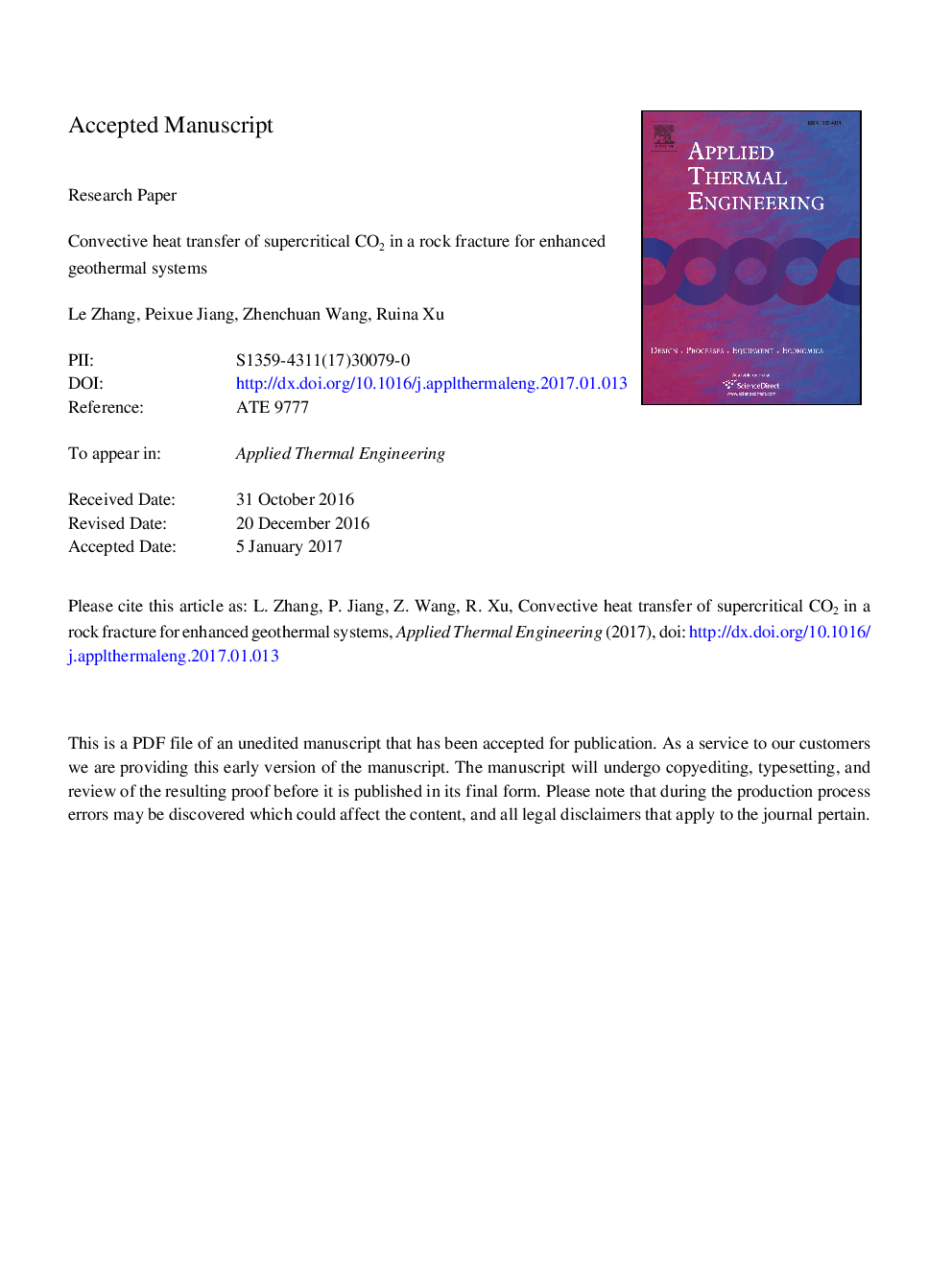| Article ID | Journal | Published Year | Pages | File Type |
|---|---|---|---|---|
| 4991656 | Applied Thermal Engineering | 2017 | 63 Pages |
Abstract
Convective heat transfer characteristics of supercritical pressure fluid in a rock fracture are important for building an accurate heat transfer model of enhanced geothermal systems. This paper presents experimental investigations of laminar convection heat transfer of supercritical pressure CO2 in an artificial smooth parallel-plate fracture and a rough and tortuous fracture that was created using the Brazilian technique. Hot rock with a relatively high initial temperature reserves more heat, which can ensure a larger heat extraction rate for a longer time when cold fluid flows through the fracture. Compared with the smooth parallel-plate fracture, CO2 flowing through the rough and tortuous fracture with an equivalent hydraulic aperture extracted less heat from the hot rock due to the less efficient heat exchange in a rough fracture caused by channeling effect. This was illustrated by numerical simulation results of the reconstructed fracture based on micro-computed tomography scan data. The overall Nusselt number obtained from the numerical results was larger in a rough fracture with a larger Reynolds number due to disturbance effect on the boundary layer development. The heat transfer performance in a rough fracture is therefore influenced by interactions of the channeling and disturbance effects caused by the tortuous flow path.
Related Topics
Physical Sciences and Engineering
Chemical Engineering
Fluid Flow and Transfer Processes
Authors
Le Zhang, Peixue Jiang, Zhenchuan Wang, Ruina Xu,
